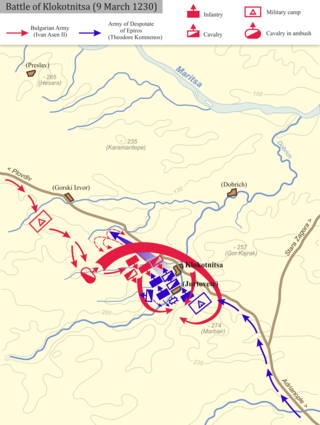The 1200s began on January 1, 1200, and ended on December 31, 1209.

Year 1277 (MCCLXXVII) was a common year starting on Friday of the Julian calendar.
The 1190s was a decade of the Julian Calendar which began on January 1, 1190, and ended on December 31, 1199.

Year 1220 (MCCXX) was a leap year starting on Wednesday of the Julian calendar.

Year 1224 (MCCXXIV) was a leap year starting on Monday of the Julian calendar.

Year 1221 (MCCXXI) was a common year starting on Friday of the Julian calendar.

Year 1125 (MCXXV) was a common year starting on Thursday of the Julian calendar.

Year 1205 (MCCV) was a common year starting on Saturday of the Julian calendar.

Year 1214 (MCCXIV) was a common year starting on Wednesday of the Julian calendar, the 1214th year of the Common Era (CE) and Anno Domini (AD) designations, the 214th year of the 2nd millennium, the 14th year of the 13th century, and the 5th year of the 1210s decade.
The 1210s was a decade of the Julian Calendar which began on January 1, 1210, and ended on December 31, 1219.
The 1220s was a decade of the Julian Calendar which began on January 1, 1220, and ended on December 31, 1229.
The 1230s was a decade of the Julian Calendar which began on January 1, 1230, and ended on December 31, 1239.
The 1240s was a decade of the Julian Calendar which began on January 1, 1240, and ended on December 31, 1249.

Year 1217 (MCCXVII) was a common year starting on Sunday of the Julian calendar.

Year 1207 (MCCVII) was a common year starting on Monday under the Julian calendar.

Year 1230 (MCCXXX) was a common year starting on Tuesday of the Julian calendar.

Year 1249 (MCCXLIX) was a common year starting on Friday of the Julian calendar.
The Battle of Pelagonia or Battle of Kastoria took place in early summer or autumn 1259, between the Empire of Nicaea and an anti-Nicaean alliance comprising Despotate of Epirus, Kingdom of Sicily and the Principality of Achaea. It was a decisive event in the history of the Eastern Mediterranean, ensuring the eventual reconquest of Constantinople and the end of the Latin Empire in 1261.

The Battle of Antioch on the Meander was a military engagement near Antioch-on-the-Meander between the forces of the Empire of Nicaea and the Seljuk Sultanate of Rûm. The Turkish defeat ensured continued Nicaean hegemony of the Aegean coast of Asia Minor. The Seljuk sultan, Kaykhusraw I, was killed on the field of battle. The battle took place near the modern town of Yamalak in Kuyucak district in Aydın Province.

The Battle of the Rhyndacus was fought on 15 October 1211 between the forces of two of the main successor states of the Byzantine Empire, the Latin Empire and the Byzantine Greek Empire of Nicaea, established following the dissolution of the Byzantine state after the Fourth Crusade.













